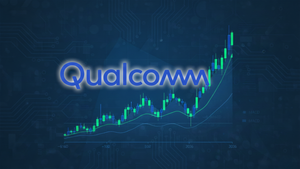Trump's Second Term: Ushering in "Trade Wars 2.0" and Global Repercussions

The specter of intensified global trade conflicts, colloquially dubbed "Trade Wars 2.0," is casting a long shadow over the international economic landscape as Donald Trump's potential return to the U.S. presidency draws closer. With proposals for sweeping new tariffs, including rates as high as 60% on goods from China and a universal baseline tariff on all imports, the implications for international trade, supply chains, and economic relations are potentially far-reaching and profoundly disruptive. This aggressive protectionist stance signals a radical departure from established trade norms, promising a turbulent period for global markets and public companies navigating an increasingly fractured trade environment.
The prospect of a second Trump administration heralds a significant escalation of the "America First" trade agenda, which prioritizes domestic industries and seeks to rebalance trade deficits through punitive tariffs. These proposed measures are not merely a continuation of past policies but represent a substantial intensification, designed to fundamentally reshape global commerce. Such a dramatic shift could lead to higher costs for consumers, significant supply chain reconfigurations, and a period of heightened economic uncertainty across the globe.
Trump's Tariff Tsunami: A Deep Dive into "America First" Trade Policies
Donald Trump's potential second term is poised to unleash a new era of protectionism, characterized by a comprehensive overhaul of U.S. trade policy. At the heart of his agenda are proposals for widespread tariffs, intended to safeguard American industries, reduce trade deficits, and leverage economic power on the international stage. The most striking of these is a proposed universal minimum tariff rate of 10% to 20% on nearly all imports. This blanket approach would significantly raise the cost of goods entering the U.S., forcing companies to reassess their sourcing strategies.
The most severe tariffs are reserved for China, with proposals during his 2024 campaign reaching an astonishing 60% on Chinese goods. In a more extreme hypothetical scenario for 2025, U.S. tariffs on Chinese products could surge to 145%, potentially triggering a reciprocal 125% tariff from Beijing. These figures build upon existing Section 301 tariffs from his first term, a proposed 20% "fentanyl tariff," and a temporary 10% "reciprocal tariff," cumulatively leading to a baseline of 30% or more on many Chinese imports. Beyond China, Trump has also floated a 25% tariff on most goods from Mexico and and Canada, with some discussions even hinting at a 100% tariff on Mexico, though exemptions for USMCA-compliant goods were later considered for Canada and Mexico. Specific sectors like steel, aluminum, and copper could face tariffs as high as 50%, while imported cars might see a 25% levy. New tariffs on pharmaceuticals and semiconductors are also under consideration, alongside "secondary tariffs" of 25% on countries like India for their trade with Russia.
This aggressive tariff strategy is rooted in Trump's "America First" philosophy, which prioritizes domestic manufacturing and job creation. Tariffs are viewed as a powerful tool to force other nations into more favorable trade agreements, protect national security by reducing reliance on foreign supply chains, and penalize U.S. companies that outsource manufacturing. The initial market reactions to these proposals have been varied but generally reflect concerns about increased inflation, potential economic slowdowns, and heightened geopolitical tensions. Key stakeholders include American consumers, who could face higher prices; multinational corporations (MNCs) grappling with supply chain disruptions; and trading partners bracing for retaliatory measures. The U.S. stock market (NYSE: SPX) and (NASDAQ: NDX) could see volatility as investors recalibrate expectations for corporate earnings and economic growth under such conditions.
Navigating the Storm: Potential Winners and Losers in the New Trade Order
The "Trade Wars 2.0" scenario, as envisioned by a potential second Trump administration, promises a seismic shift that will inevitably create both winners and losers across various industries and companies. The primary beneficiaries will likely be domestic manufacturers in sectors targeted by increased tariffs, particularly those competing directly with imported goods. Companies with significant U.S.-based production, such as steelmakers like Nucor Corporation (NYSE: NUE) and Cleveland-Cliffs Inc. (NYSE: CLF), or automotive manufacturers like General Motors Co. (NYSE: GM) and Ford Motor Company (NYSE: F) that produce a substantial portion of their vehicles domestically, could see increased demand as foreign alternatives become more expensive. The rationale is that higher import costs will incentivize consumers and businesses to "Buy American," thereby boosting local production and employment. This shift could also benefit smaller U.S. businesses that currently struggle to compete with lower-cost imports.
Conversely, the list of potential losers is extensive and diverse. U.S. importers and retailers stand to be significantly impacted. Companies like Walmart Inc. (NYSE: WMT), Target Corporation (NYSE: TGT), and other major retail chains that rely heavily on a global supply chain, particularly from China, will face increased sourcing costs. These costs will either be passed on to consumers, leading to higher prices and potentially reduced demand, or absorbed by the companies, eroding profit margins. Similarly, U.S. manufacturing companies that depend on imported components or raw materials will face higher input costs, which could negate any benefits from reduced competition on finished goods. For instance, an American electronics manufacturer reliant on Chinese-made microchips would see their production costs rise dramatically.
Beyond direct importers, multinational corporations (MNCs) with intricate global supply chains will face immense pressure to reconfigure their operations, potentially leading to costly reshoring or near-shoring initiatives. Companies like Apple Inc. (NASDAQ: AAPL), which has significant manufacturing ties to China, could face substantial challenges in adjusting its production strategy and managing increased costs. Furthermore, U.S. agricultural exporters, such as those dealing in soybeans, corn, and pork, could suffer immensely from retaliatory tariffs imposed by countries like China, which historically has been a major buyer. During the first trade war, companies like Archer-Daniels-Midland Company (NYSE: ADM) and Bunge Global SA (NYSE: BG) felt the pinch of reduced exports and depressed commodity prices. The global shipping and logistics industry, including companies like FedEx Corporation (NYSE: FDX) and United Parcel Service, Inc. (NYSE: UPS), could also see reduced volumes and increased uncertainty in international freight as trade flows become more restricted and unpredictable.
Global Ripples: Industry Impact and Broader Implications
The return of aggressive protectionism under a potential second Trump administration would send profound ripples through global industries, extending far beyond the immediate trade partners. This event fits squarely into a broader trend of deglobalization and the increasing weaponization of economic policy, with countries increasingly prioritizing national security and economic self-sufficiency over free trade. The implications are multi-faceted, affecting everything from supply chain resilience to international diplomatic relations.
One of the most immediate and significant impacts would be on global supply chains. Companies have spent decades optimizing for efficiency and cost-effectiveness, often leading to geographically dispersed and highly interconnected production networks. A sudden imposition of widespread tariffs would necessitate a costly and complex restructuring of these chains. Industries reliant on just-in-time inventory and global sourcing, such as automotive, electronics, and apparel, would be particularly vulnerable. The "China+1" strategy, where companies diversify their manufacturing away from China, would likely accelerate, benefiting countries like Vietnam, Mexico, and India, but at a significant cost in terms of relocation and re-tooling. This could lead to higher manufacturing costs globally, ultimately translating to increased consumer prices and inflationary pressures.
The broader geopolitical implications are equally substantial. "Trade Wars 2.0" would likely exacerbate tensions with key trading partners, particularly China and the European Union. Retaliatory tariffs from these economic blocs are almost a certainty, creating a tit-for-tat dynamic that harms all participants. This could weaken multilateral trade organizations like the World Trade Organization (WTO), as countries increasingly resort to unilateral actions. Regulatory and policy landscapes would become incredibly complex, with businesses facing a patchwork of tariffs, quotas, and non-tariff barriers that vary by country and product. Historically, such trade conflicts, like the Smoot-Hawley Tariff Act of 1930, have been linked to severe global economic downturns, demonstrating the potential for widespread negative consequences. While the current global economy is far more integrated, the lessons from history serve as a stark warning against the dangers of unchecked protectionism. The drive for national security in critical sectors like semiconductors and rare earth minerals would intensify, leading to further subsidies and state-backed investments in domestic production, potentially creating a more fragmented and less efficient global market.
What Comes Next: Navigating the Turbulent Waters Ahead
The path forward under a "Trade Wars 2.0" scenario is fraught with uncertainty, demanding strategic pivots and adaptive measures from governments and corporations alike. In the short term, markets would likely experience significant volatility as investors digest the implications of new tariff announcements and potential retaliatory measures. Companies would scramble to re-evaluate sourcing contracts, accelerate plans for supply chain diversification, and assess the financial impact on their bottom lines. Consumers, meanwhile, could face immediate price increases on a wide range of imported goods, from electronics and clothing to food. Businesses heavily reliant on international trade, especially small and medium-sized enterprises (SMEs) with less capacity to absorb increased costs or pivot quickly, would face immense pressure and potential contraction.
In the long term, the global economic landscape could fundamentally transform. We might see a more regionalized trade environment, with companies prioritizing production within specific trade blocs (e.g., North America, Europe, Asia) to mitigate tariff risks. This could lead to a resurgence of manufacturing in countries that benefit from these regional supply chains, but also a fragmentation of global markets and a potential reduction in overall economic efficiency. Market opportunities could emerge for companies specializing in reshoring, automation, and domestic logistics, as businesses seek to localize production and distribution. Conversely, challenges will abound for export-oriented industries and those heavily invested in globalized production models.
Potential scenarios range from a moderate increase in protectionism, where tariffs are selectively applied and subject to negotiation, to a full-blown global trade war with widespread, escalating tariffs and significant economic decoupling, particularly between the U.S. and China. The latter scenario could lead to a global recession, heightened inflation, and a severe disruption of international relations. Investors should closely monitor policy announcements, the reactions of major trading partners, and the resilience of corporate earnings in the face of rising costs and diminished demand. Strategic adaptations could include investing in automation to offset higher domestic labor costs, exploring new markets less affected by trade tensions, or focusing on high-value, niche products that are less susceptible to tariff impacts.
Conclusion: A New Era of Economic Nationalism and Enduring Impact
Donald Trump's proposed "Trade Wars 2.0" represents a pivotal moment in global economic history, signaling a decisive shift towards economic nationalism and away from the decades-long trend of globalization. The key takeaways are clear: a significant increase in tariffs is likely, particularly on Chinese goods, and a universal baseline tariff on all imports is a real possibility. This will inevitably lead to higher costs for consumers, profound disruptions to global supply chains, and a period of heightened uncertainty for businesses and investors.
Moving forward, the market will be characterized by increased volatility and a need for companies to demonstrate unparalleled agility. Businesses with strong domestic production capabilities or those able to rapidly reconfigure their supply chains to less-impacted regions will be better positioned to weather the storm. Conversely, those heavily reliant on single-source imports or export markets vulnerable to retaliatory tariffs face significant headwinds. The long-term impact could include a more fragmented global economy, characterized by regional trade blocs and a greater emphasis on national self-sufficiency in critical industries.
Investors should closely watch for shifts in corporate guidance regarding input costs and profit margins, as well as any announcements from major trading partners regarding retaliatory measures. The performance of sectors with high import exposure versus those with strong domestic production will be a key indicator. Furthermore, the evolving geopolitical landscape and the stability of international trade relations will be paramount. Ultimately, "Trade Wars 2.0" is not merely an economic policy adjustment but a fundamental reordering of global commerce, with lasting implications for prosperity, international cooperation, and the very fabric of the global economy.
More News
View More




Recent Quotes
View More
Quotes delayed at least 20 minutes.
By accessing this page, you agree to the Privacy Policy and Terms Of Service.